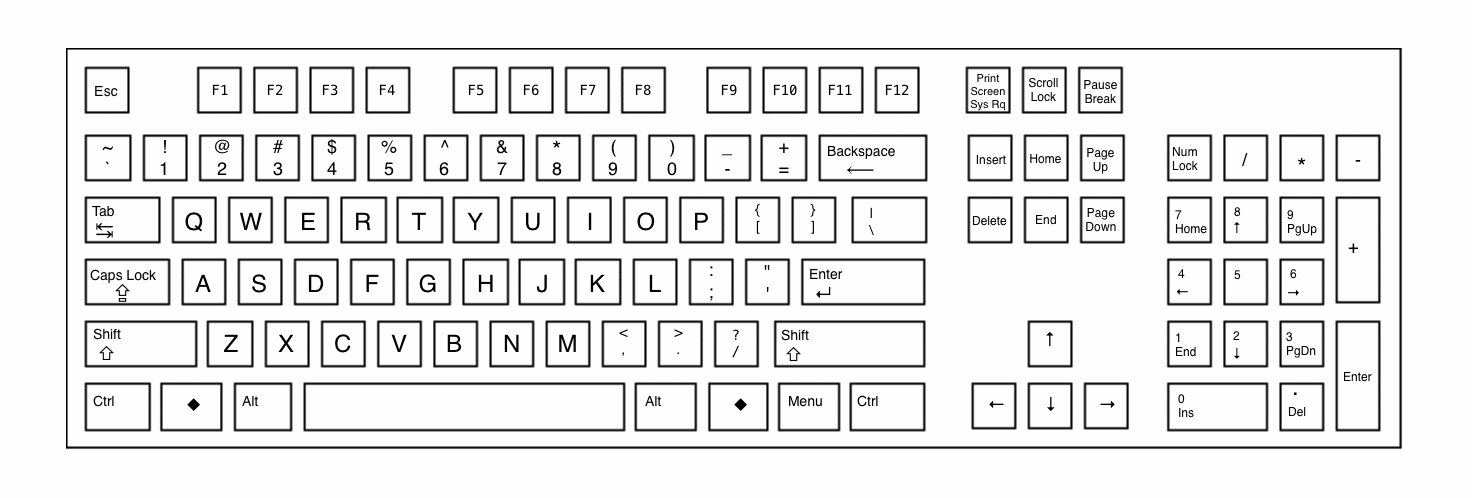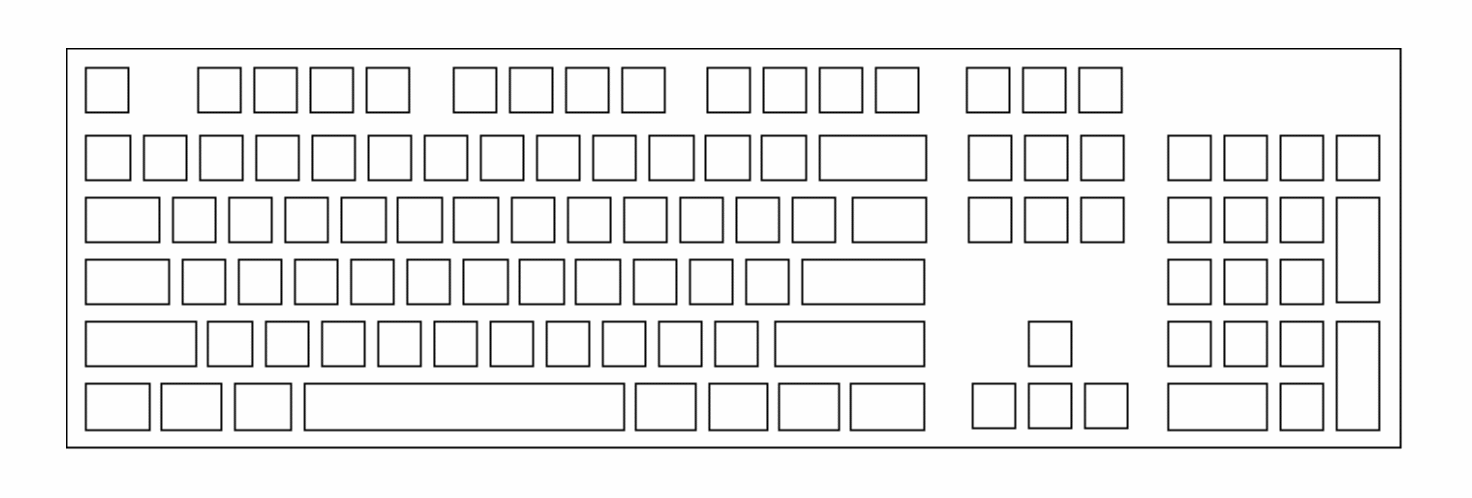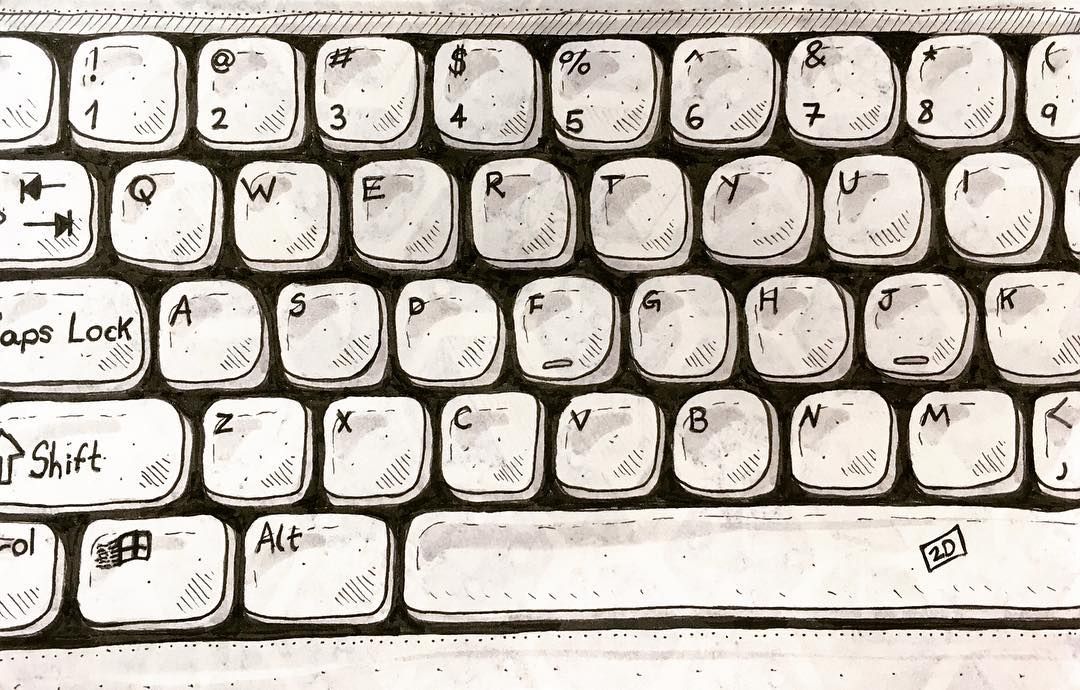Keyboard Sketch Drawing
Hey there, fellow techies! Today, I want to talk to you about an essential piece of technology that we use every day - the computer keyboard. If you're someone who spends a lot of time in front of the computer, you know how important a good keyboard is. It can make typing a breeze or a nightmare, depending on its functionality. So, let's dive into the art of keyboarding and see what we can learn.

First of all, let's talk about the anatomy of a keyboard. Every keyboard consists of a set of keys arranged in a specific manner. The most common keyboard layout is called the QWERTY layout, which gets its name from the first six letters on the top left-hand corner of the keyboard. Other layouts, such as the Dvorak Simplified Keyboard, are designed for speed and efficiency.
Each key on the keyboard has a specific function. The keys are categorized into four sections - the alphanumeric keys, the function keys, the control keys, and the cursor keys. The alphanumeric keys are the ones you're probably most familiar with. These are the letters, numbers, and symbols that you use to type words and sentences. The function keys are located on the top row of the keyboard and are used to perform specific tasks.
The control keys are used to perform shortcuts on the computer. These include the Ctrl, Alt, and Shift keys. Lastly, the cursor keys are used to move the cursor around the screen. Now that we know the basics, let's move on to some tips on how to type like a pro.
How to: Type Like a Pro
Typing is all about muscle memory. The more you practice, the better you get. To start typing like a pro, you need to be comfortable with the keyboard. Find a keyboard that suits your needs, whether that's a mechanical keyboard or a membrane keyboard. Once you have a keyboard that you're comfortable with, you can start practicing.
One tip for practicing is to use a typing tutor. There are many online typing tutors available that can help you improve your typing speed and accuracy. Another tip is to focus on your posture. Make sure you're sitting up straight with your shoulders relaxed, and your feet flat on the floor. This will help you avoid strain on your back and neck.
Another crucial factor in typing like a pro is to use all your fingers. Many people make the mistake of using only a few fingers to type. This can slow down your typing speed and increase the risk of fatigue and injury. Using all your fingers can help you type faster and with less strain on your hands and wrists.
It's also important to take breaks when typing for long periods. Typing for extended periods can cause strain on your hands, wrists, and fingers. Taking short breaks can help relieve this strain and prevent injury. Lastly, make sure your keyboard is clean and free from dust and debris. Keeping your keyboard clean can help reduce the risk of infection and prolong its lifespan.
Tips: Choosing the Right Keyboard
Choosing the right keyboard can make all the difference in your typing experience. Here are a few tips on how to choose the right keyboard for you:
- Consider the switch type - mechanical or membrane.
- Choose a layout that suits your needs.
- Check for backlighting if you work in low-light conditions.
- Consider the number of keys and their placement.
- Choose a keyboard with additional features like a built-in wrist rest or media controls.
In conclusion, the computer keyboard is an essential piece of technology that we use every day. By understanding the anatomy of a keyboard and following these tips, we can improve our typing skills and make our work more efficient. So, choose the right keyboard, practice regularly, and type like a pro!
Thanks for reading, and happy typing!



Post a Comment for "Keyboard Sketch Drawing"